#Keelback Slugs
Explore tagged Tumblr posts
Text
Uncharismatic Fact of the Day
What's the name of the world's biggest slug? 'Biggest slug', of course! The scientific name for the leopard slug is Limax maximus which literally means 'biggest slug' in latin. Although they aren't *quite* large enough to earn the title of largest slug, they've secured their place as runner up, reaching lengths of 10–20 cm (4–8 in)!
You can read more about this species here.
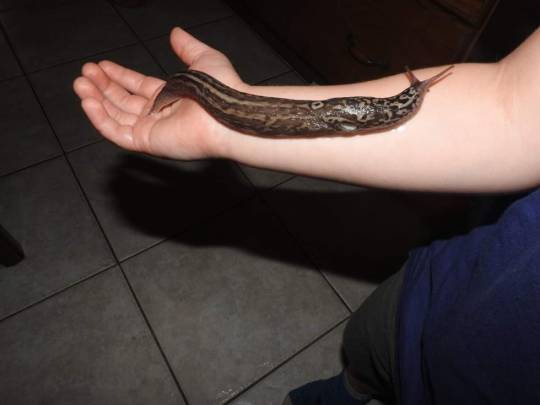
(Image: A leopard slug (Limax maximus) by PJ Bernauer)
If you like what I do, consider buying me a ko-fi!
#leopard slugs#Stylommatophora#Limacidae#keelback slugs#slugs#gastropods#mollusks#invertebrates#uncharismatic facts
727 notes
·
View notes
Text

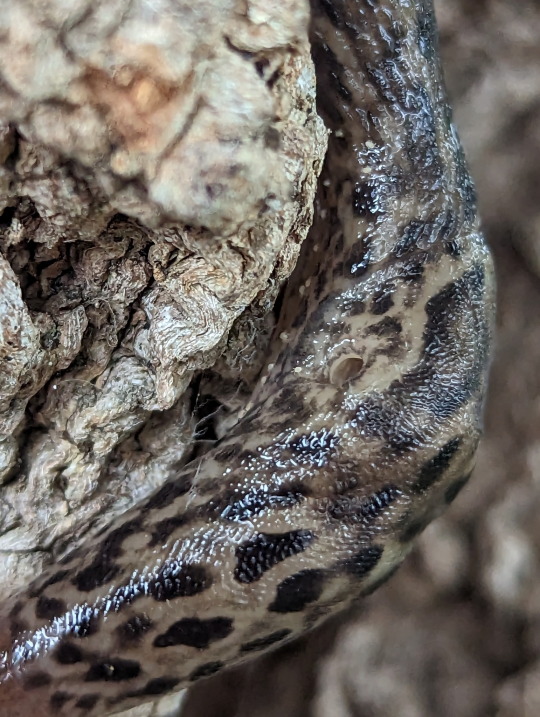
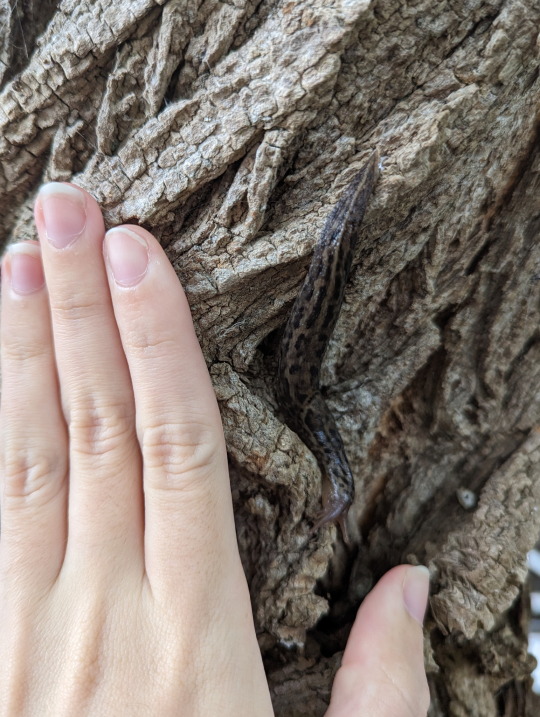
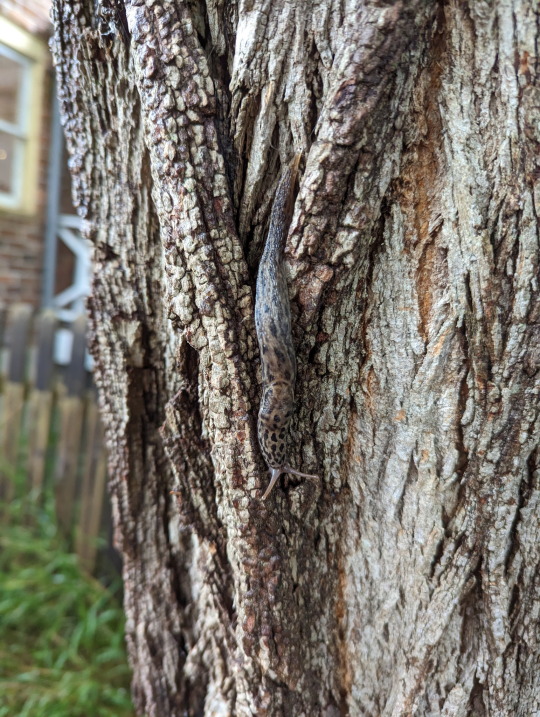
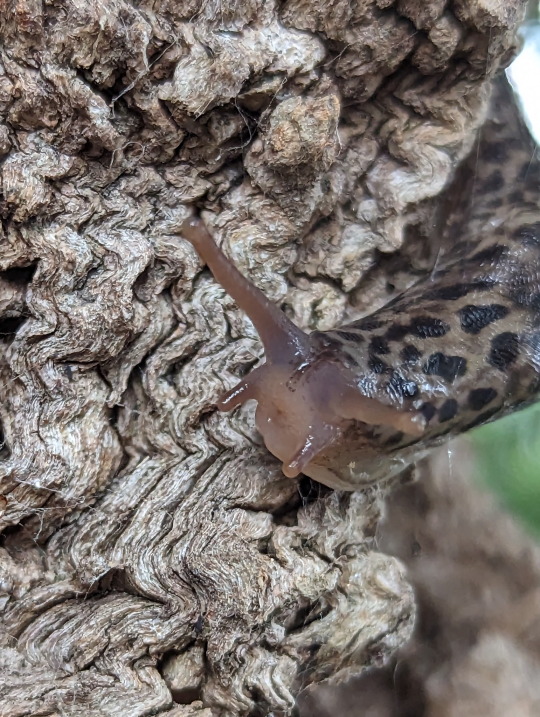

Giant Leopard Slug
Another invertebrate that shocked me with its size.
Limax maximus
23/03/23 - NSW, Berrima
#Giant Leopard Slug#Limax maximus#Limacidae#Keelback Slugs#Gastropoda#Gastropods#Heterobranchia#Heterobranchs#Stylommatophora#slugs#invertebrates#invertblr
44 notes
·
View notes
Text
#2270 - Ambigolimax sp. - Threeband Slug

A genus of keelback slug, at least for now - there is ongoing debate in slug circles about the exact taxonomic relationships of Ambigolimax and its relatives, and for that matter how many species are in the genus - it may get demoted to a subgenus of Lehmannia. All three currently accepted species are widespread, frequently greenhouse pests, and found in New Zealand.
Taupo, Taupo Volcanic Zone, New Zealand
0 notes
Text

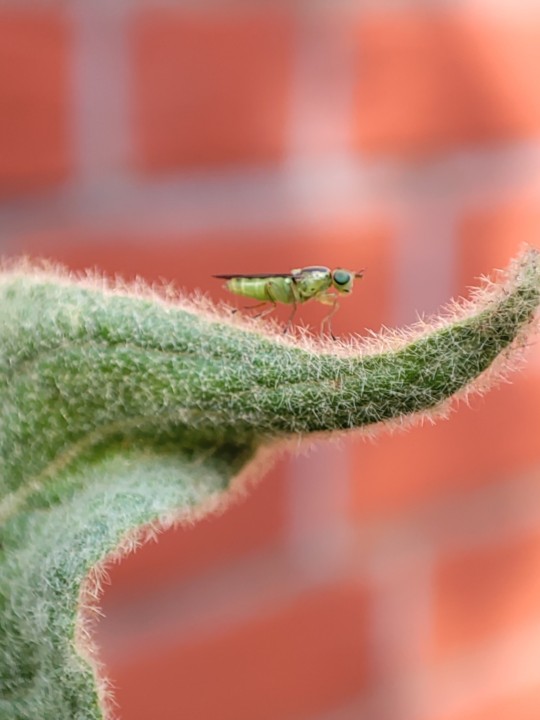

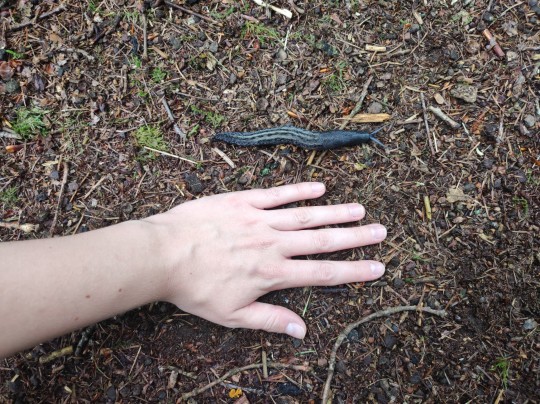

rusty tussock moth caterpillar / meromyza femorata / scorpion fly / keelback slug / dead-nettle leaf beetle
#can't stop won't stop finding bugs#the slug was HUGE had to have a hand comparison but know that my hands are comparatively small#still that's the biggest slug species we got!!#can I admit something? I have a soft spot for flies. very underrated insect if you ask me#the color and shape variation!! look at the scorpion fly she has a snout!!!!#AND a stinger#bugposting
18 notes
·
View notes
Text

So you find yourself trudging through the jungle, perhaps looking for a rare specimen or maybe duped into searching for some "lost temple" or whatnot. It is hard work navigating this labyrinth of trees and fighting your way through the understory. The sheer heat and humidity ain't helping much either! So you stop in a clearing to catch your breath and drink some water, when suddenly rain starts to fall. If this journey couldn't get any worse! Sadly, it isn't even a refreshing rain, cool and clear, but a warm suffocating one. And it seems....a bit sticky too. As you see these thick gooey droplets fall upon your shoulder, you realize it isn't raining anywhere else around you, and this stuff is coming down in awkward globs. You touch this goop with your fingers, as apparently that is the only way to confirm if it is water or something else, and indeed find it to be warm and sticky. At this point you immediately drop everything and make a break for it, knowing full well that something is lurking up above you. No time should be wasted in getting away from that spot, only investigating further when you are somewhere more secure. Well, that is what you would do if you weren't an idiot, but if the stories and pulp novels were directing this scene, you would somehow find no need for haste.
You would instead fondle this odd goop in your fingers, and maybe take a whiff because why not. Certainly gathering critical information by doing this! And then once more falls down around you and you finally come to the conclusion it isn't just water (probably because you stuck it in your mouth), you decide to look up. But slowly! Wouldn't want to ruin the tension! Just stand locked in place and very slowly tilt your head upward, just in time to see a massive slug drop down from the branches and ruin your day (and probably life). What a load of rot! Do people seriously read these things? The pulp novels, I mean, not my journal entries. The sheer stupidity that some of those characters display is mind boggling! Why aren't you getting away from the saliva shower? Why do you have to touch blood to determine that it is indeed blood? It's ridiculous! Am I the only one irritated by this kind of writing?! I thought Eucella would find it all dumb too, but whenever I am in her office and talking about it, she always puts her head in her hands and makes a comment about how she has work to do. Really likes avoiding that subject, so she probably secretly likes that stuff. After all, she did write some pretty pulpy mushy stuff back in the day, so that might actually be her bread and butter. Oh, I am rambling again! Right! Back to the entry!
So why did I make this tale about someone getting dropped on by a giant slug? Because this entry is talking about a giant slug! The Spotted Keelback, to be exact! The Spotted Keelback is a species of, well, giant slug (doing great, Chlora), but it would be better to say that they are actually related to Carcolhs! Now do note, I did not say that they are Carcolhs, rather that they are related. As you can probably see, one group has a big ol shell on their back, while the Spotted Keelback very obviously doesn't. It seems they once shared a common ancestor, but eventually split and became the two different groups we see today. The Spotted Keelback does share some similarities in size and general anatomy, especially with that fierce radula of theirs! Developed into a very toothy mandible that can easily shred through skin and flesh. The main difference you can see is that they do not have the oral tendrils that Carcolhs have, rather their snout ends in stubby orifices or nozzles. These are why I talked about the warm sticky saliva up above (is it weird if I keep writing that? Not sure), as from these orifices come large amounts of gooey mucus. This stuff is similar to what coats the Lou Carcolh's oral tendrils, as it is like a fast acting adhesive once it makes contact with a surface. The difference here, though, is that this mucus is capable of forming long strands and webs, with incredible strength that can support the weight of the Spotted Keelback or human sized prey! Of course, it depends on the thickness of this gooey rope, as thin ones do more to entangle than actually lift up its food. This glue slime doesn't just come from their oral tubes, but from their foot and breathing pore too! It should be noted that while this mucus can grip prey and surfaces tightly, the Spotted Keelback can slither through this stuff effortlessly! It wouldn't be effective if they could get caught in their own trap!
From my earlier tale and talk of the glue snot, you can probably already guess how the Spotted Keelback hunts. Their mucus is used to snare and entangle prey, slowing them down or trapping them for the slug to come in and finish them off. They choose to hunt by ambush, typically waiting up in the thick branches above for prey to pass by down below. Their actual techniques in trapping prey can vary, as they have a few tricks. One is to find a clearing and drop thick puddles of this mucus on the ground, perfect for catching the legs of those who step in it. Another is to hang long strands of mucus down from the branches, often coated in leaves and detritus to look like random vines. Those who blunder through them will find these "vines" holding them fast, and their confusion and struggling is often enough to tie them up more and give the Keelback time to slink in. There is also the tactic of waiting in the branches and then shooting out a wide spray of mucus to shower down on prey like a gooey net. All very valid strategies! In most cases, the Spotted Keelback has created itself a long thick strand of mucus that it uses to hang itself from, suspending it in the air right above the target. When victims get tripped up, the Keelback will release its grip on this mucus rope and plunge down onto its meal. Its boneless nature means nothing gets broken from such a fall, but the same typically cannot be said for their prey. The sheer weight of a Keelback dropping on you can knock the wind out of you, break bones and leave you in a very bad situation. Its coating of mucus from its foot will affix them to prey, and their muscly body won't wait to coil around the victim and hold them tight. From there, fangs filled with paralytic venom will be jabbed in to fully stop their food from fighting back. And once they are rendered immobile, the fang-filled radula will be used to shred them into easy to eat chunks.
Since the jungle and rainforests are active places with a lot of hungry mouths, the Spotted Keelback will typically take its kill somewhere else to enjoy. They will coat it in mucus then slither up a tree carrying a long strand still connected to the carcass. Once up in the branches, the food is then pulled up and suspended mid-air. Now the slug can slither down and enjoy its meal in peace, as no large predators or scavengers can reach them in this position, and smaller ones risk getting caught in their glue trap! Kind of a beautiful way to eat, hanging in the air like that! Though elegance is far from the mind once they start digging in, as blood and meaty bits start flying and raining the ground down below. Smaller critters do love that part, darting into this meat shower for free scraps.
The slime strands they create and rappel from play a large part in their lifestyle. Obviously, it is big for hunting, but it is also how they escape predators, hold onto kills they cannot finish in one sitting and also do their whole reproduction thing. Like Carcolhs, Keelbacks are hermaphrodites, so any two of their species will do when it comes to mating! When the breeding season is on, the Keelbacks will lay down pheromone laced trails of slime wherever they go, as others can use it to follow them when they catch the scent. The individual as well will be looking for goo trails to track down mates, following it until they run into the secretor! Once two slugs meet, it is time for mating, which I must say is an incredibly beautiful display! It is truly a show you have to see to believe! Hopefully I am not sounding too weird about this. Actually, am I allowed to go into detail on this subject? Ah whatever, full speed ahead! Eucella will cut it out if she finds it inappropriate, but that is nature! Animals have sex, how do you think we get more animals?! So the two Keelbacks will create a long thick strand of mucus that hangs from high up in the trees. The two shall dangle from this strand and intertwine their bodies. Once they are suspend and wrapped around one another, they will evert their large, long and surprisingly colorful penises to inject the other with sperm. I would include a drawing of that, but I feel like I am already testing my luck with this description (I can already feel Eucella's red inked quill hanging above this whole section)! Like I said though, it is shockingly beautiful, and the end result is hundreds of eggs laid by each slug. These egg clusters are hung from sticky strands where predators cannot reach them. When the young hatch, it is up to them to fend for themselves.
Spotted Keelbacks are opportunistic predators that will happily try to eat anything that enters their trap, so that means humans are on the menu! Dryads are technically in danger too, as they will drop on any moving thing down below but won't know it tastes awful til they have their radula buried in our neck. With this, the species is feared by both locales and outsiders. Some folks call them "Jaguar Slugs" due to their large size, spotted pattern and carnivorous diet. Their glue slime is collected by some to serve as an adhesive, good for fusing two things together or repairing damage to homes, canoes and other things. Their meat is considered to be incredibly tender and delicious, and their hide is worn for ceremonial garbs or just straight up bragging rights. Hunting them typically calls for offering them a sacrifice, driving another animal into their trap so the Keelback descends upon them. Once it is distracted by this bait, the hunters rush in with spears and drive them in deep. Whatever weapons are used for this hunt should be ones you aren't afraid of losing, as when you plunge them in, good luck ever getting them out. One of the dangers of eating Spotted Keelback is finding a spear head or arrow tip in the middle of your meal. Some say finding one that was lost in a failed hunt is a sign of bad luck, which I find to be an understatement when you suddenly find yourself chewing on a spearhead.
Chlora Myron
Dryad Natural Historian
--------------------------------------------------------
"Spotted Keelback"
What else we need for Halloween? Snails and Slugs! Or more so just slugs!
31 notes
·
View notes
Text

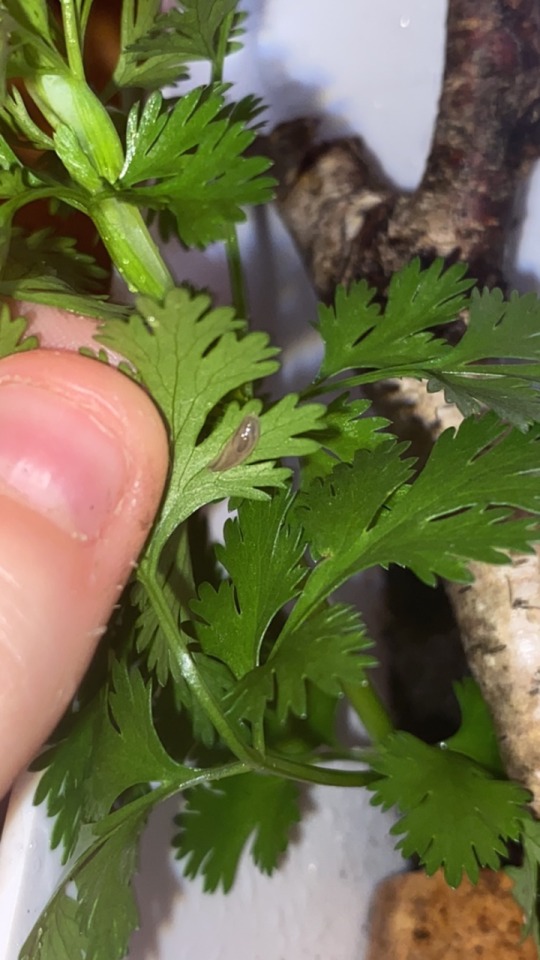
My species of (Keelback slugs) are hatching! ((Lehmannia valentiana)) 🐌
#tw slugs#slugs of love#slugs#slugs and snails#snails#snail#gastropoda#insects#cute bugs#bugs#tumblr bugs
27 notes
·
View notes
Text

Keelback slug. They have become rather rare in Europe.
15 notes
·
View notes
Text
-saw two ospreys in flight. unsure if they really were ospreys but they were too big to be buzzards!
-crossed a blue bridge. it was built in 1853, according to a sign
- heard a corn crakes call – this is another bird thats named a king in german! wachtelkönig: quail-king; king of the quails, because way back on, quail hunts, they would often capture a crake alongside the quails and because they looked very similar with the exception of the crake being bigger, the hunters would call him the leader or king of the quails :)
- saw lots of cows and one farmer who rode on a bike and then cheerfully called good morning to his cows and also sais hi to me. he was very nice!
- saw a big, violet shimmering bug…will identifiy him later
- saw three black keelback slugs!
13 notes
·
View notes
Text
I meant to write Partyschnegel. Schnegel being the German word for keelback slugs like this leopard slug. And it's undeniable he's partying hard
i love everyone forever
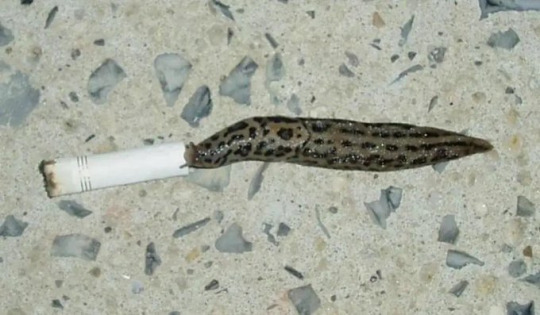
10K notes
·
View notes
Text
What Do Snakes Eat?
Snakes, like many predators, have a natural urge to preserve energy. They desire to hunt large animals, consume a substantial meal, and then digest the food in peace.
Snakes such as the green anaconda, king snakes, or the king cobra are dangerous cold-blooded animals that have been around for centuries and are everywhere. There are thousands of different species, each with its color, length, and behavior.
So what do these predators eat to survive? Let's explore what snakes eat and how they hunt for their meals.

So, What's On The Snake's Menu?
A snake's diet depends on its size, location, and whether it's venomous. Some snakes are even known to eat other snakes!
Researchers have found that venomous snakes eat more often than non-venomous snakes. It takes a lot of energy to produce venom, and they need to replenish their supplies regularly.
Take a look at this lengthy list of some of the different animals snakes have been known to eat:
Insects
Juvenile snakes love to eat insects, that is until they are large enough to digest larger animals. Some small snakes eat insects until they reach adulthood, but most snakes transition to eating mice and other small animals as they mature.
Certain snakes feed on insects. Depending on the availability in their area, many species will hunt for various types of insects.

Grasshoppers - Grasshoppers are located all over the world and they usually share the same habitat as snakes. They are a common food source for many different species of snakes.

Crickets - Crickets are in many dark and moist places. They are usually nocturnal, so they are often active when snakes are hunting. Crickets are small and easy to catch and have a lot of protein.

Cockroaches - Cockroaches are one of the most nutritious insects for snakes. Known to be high in protein and fat and have a hard exoskeleton that can help a snake digest its food.

Mealworm - Mealworms are usually found in the soil and are a good source of protein for snakes. Mealworms are the larvae of beetles and are food for reptiles and amphibians.

Slugs - Slugs are a common food source for snakes, especially in the wild. They are easy to catch and are a good source of moisture.
Insects are critical to the snake diet because they provide essential nutrients and hydration. Snakes need to shed their skin regularly, and the insects they eat help with this process.
Birds and their eggs
Snakes will frequently consume a bird whole, including the feathers, beak, and feet. However, birds can be challenging prey. Snakes prefer to eat eggs, which are simple to locate and don't require as much effort to capture and consume.
Dasypeltis or egg-eating snakes are non-venomous snakes that can be found all throughout Africa, mostly in forested or woodland areas that are also home to a wide variety of bird species. These snakes may pierce eggs with the help of their sharp teeth, which are designed to grip and tear, then consume the entire contents.
They frequently consume the entire egg, including the shell. Researchers observed snakes eating eggs from chickens, ostriches, quail, ducks, and geese.

Fish
Pescatarian snakes are not as common as you might think. Most snakes don't eat fish at all and aren't able to digest sharp fish bones correctly, and they can't fish well enough to provide a significant source of food.
That being said, there are a few species of snakes that have been known to eat fish on occasion. These snakes usually live near bodies of water and have adaptations that help them catch and eat fish.
The checkered keelback, garter snake, cottonmouth, dice snake, and water snake are some examples of snakes that will eat fish.

Frogs
Frogs are so abundant in the snake’s native environments that they're an easy target. Snakes will eat just about any type of frog, but the ones they go for most often are the larger ones.
Bullfrogs, common toads and frogs, pool frogs, and leopard frogs are a few of the most popular species of frogs that snakes consume. In a variety of environments and biomes, snakes consume frogs in significant numbers.

Lizards
Snakes hunt and eat lizards in many regions of the world. Iguanas, geckos, skinks, anoles, and chameleons are a few of the most common lizard species that snakes consume. Lizards are quite common where snakes reside, so they're an easy meal.

Small mammals
Small mammals make up a significant part of the diet of many snakes. Most snake species hunt and consume small mammals such as rodents (mice, rats, etc.), shrews, moles, chipmunks, and squirrels.

Are All Snakes Carnivores?
100% of snake species are carnivores. A snake's digestive tract is adapted to devour very densely high-calorie foods like small prey animals. They only eat every few weeks because their meals take some time to digest. Snakes also lack the digestive tract bacteria required to break down plants. Additionally, plants don't have enough calories. Thus snakes can't generate energy from consuming them.
How Do Snakes Hunt And Eat Their Prey?
When hunting, snakes use their senses to find their prey. Some snakes seek prey by feeling body heat or body temperature. In contrast, other snakes utilize their sense of smell to locate potential meals by flicking their tongues in and out. When they are close enough, they quickly and accurately strike. Giant snakes will eat deer or large animals.

Non-venomous Snakes
Some non-venomous snakes subdue their prey using constriction. After a successful strike, they quickly coil their bodies around the animal, preventing it from escaping and cutting off its air supply. Once the prey has stopped struggling, the snake swallows it whole.

Venomous Snakes
Venomous snakes kill their prey using venom. A successful bite injects the poison into the animal's bloodstream. The venom quickly begins to shut down the animal's nervous system. Once the animal is paralyzed, the venomous snake will consume it whole.
Need Help With Snakes On Your Property?
If you need help with snakes on your property, AAAC Wildlife Removal is the best company to call. We'll take care of the problem in a quick and efficient manner so you can feel safe in your home.
We'll also make sure that no other snakes are able to get into your home so you won't have to worry about these slithery creatures again. Contact us today to schedule a consultation.
Conclusion
When it comes to food, snakes have a wide variety of options. From insects to rodents, to frogs, to their fellow snakes, these carnivorous creatures will consume just about anything they can get their mouth around. While most snakes are content to eat smaller prey, some species of snakes, like the anaconda, can grow large enough to take down much larger animals. No matter what they're eating, one thing is for sure - snakes are some of the most efficient predators in the animal kingdom!
Locally Published on: https://pittsburgh.aaacwildliferemoval.com/blog/snakes/what-do-snakes-eat/
0 notes
Photo



Leopard Slugs Spotted
Also known as the great grey slug or giant garden slug, the leopard slug (Limax maximus) is among the largest of the keelback slug family. At their biggest they can reach up to 20cm in length. Individual coloring ranges from grey to bright yellow, and is covered with dark spots that give it its distinctive name. The head sports 4 tentacles-- two eye stalks and two lower tentacles used for taste and smell. Extending from the head to a third of the way down the body is a “shield” or mantle, used to hide respiratory pores, the reproductive organs, and the anus, the latter two of which are located on the right side of the body.
L. maximus is perhaps most famously known for its unusual mating habits. This species is hermaphroditic, meaning individuals have both reproductive organs. Mating occurs year-round; when two individuals meet, they circle and feel each other with their tentacles, often for several hours. If they decide to proceed, the two then climb up a tree or other high area and lower themselves from a thick strand of mucus, twined together. Each individual then extends a penis and use them to exchange sperm. Afterwards, they can lay up to 200 eggs a piece; these hatch about a month later. Young take up to two years to reach sexual maturity, and individuals can live up to three years.
When not mating, the leopard slug spends most of its time hiding under logs, boards, leaf litter, or other dark, moist places. In addition to deciduous forests and wet grasslands, L. maximus is especially common around man-made structures like cellars and gardens, They are native to Europe, although they have been introduced to North America, South America, Africa, and Australia. The great grey slug is an omnivore, feeding on dead plants and animals. They have also been known to pursue and consume small invertebrates, reaching a blazing 15 cm an hour at their top speed. Common predators of this species are turtles, large beetles, toads, birds, and smaller mammals like hedgehogs.
Conservation status: Rated as Least Concern by the IUCN. Outside its native range, it is considered a major agricultural pest.
Photos
Todd Gardner
Kelsey Mccutcheon
Richard Packwood
#leopard slug#Stylommatophora#Limacidae#keelback slugs#air breathing gastropods#gastropods#mollusks#invertebrates#urban fauna#urban invertebrates#deciduous forests#deciduous forest invertebrates#europe#Southern Europe#western europe#africa#north africa#queer fauna
263 notes
·
View notes
Text
What Do Snakes Eat?
Snakes, like many predators, have a natural urge to preserve energy. They desire to hunt large animals, consume a substantial meal, and then digest the food in peace.
Snakes such as the green anaconda, king snakes, or the king cobra are dangerous cold-blooded animals that have been around for centuries and are everywhere. There are thousands of different species, each with its color, length, and behavior.
So what do these predators eat to survive? Let's explore what snakes eat and how they hunt for their meals.

So, What's On The Snake's Menu?
A snake's diet depends on its size, location, and whether it's venomous. Some snakes are even known to eat other snakes!
Researchers have found that venomous snakes eat more often than non-venomous snakes. It takes a lot of energy to produce venom, and they need to replenish their supplies regularly.
Take a look at this lengthy list of some of the different animals snakes have been known to eat:
Insects
Juvenile snakes love to eat insects, that is until they are large enough to digest larger animals. Some small snakes eat insects until they reach adulthood, but most snakes transition to eating mice and other small animals as they mature.
Certain snakes feed on insects. Depending on the availability in their area, many species will hunt for various types of insects.

Grasshoppers - Grasshoppers are located all over the world and they usually share the same habitat as snakes. They are a common food source for many different species of snakes.

Crickets - Crickets are in many dark and moist places. They are usually nocturnal, so they are often active when snakes are hunting. Crickets are small and easy to catch and have a lot of protein.

Cockroaches - Cockroaches are one of the most nutritious insects for snakes. Known to be high in protein and fat and have a hard exoskeleton that can help a snake digest its food.

Mealworm - Mealworms are usually found in the soil and are a good source of protein for snakes. Mealworms are the larvae of beetles and are food for reptiles and amphibians.

Slugs - Slugs are a common food source for snakes, especially in the wild. They are easy to catch and are a good source of moisture.
Insects are critical to the snake diet because they provide essential nutrients and hydration. Snakes need to shed their skin regularly, and the insects they eat help with this process.
Birds and their eggs
Snakes will frequently consume a bird whole, including the feathers, beak, and feet. However, birds can be challenging prey. Snakes prefer to eat eggs, which are simple to locate and don't require as much effort to capture and consume.
Dasypeltis or egg-eating snakes are non-venomous snakes that can be found all throughout Africa, mostly in forested or woodland areas that are also home to a wide variety of bird species. These snakes may pierce eggs with the help of their sharp teeth, which are designed to grip and tear, then consume the entire contents.
They frequently consume the entire egg, including the shell. Researchers observed snakes eating eggs from chickens, ostriches, quail, ducks, and geese.

Fish
Pescatarian snakes are not as common as you might think. Most snakes don't eat fish at all and aren't able to digest sharp fish bones correctly, and they can't fish well enough to provide a significant source of food.
That being said, there are a few species of snakes that have been known to eat fish on occasion. These snakes usually live near bodies of water and have adaptations that help them catch and eat fish.
The checkered keelback, garter snake, cottonmouth, dice snake, and water snake are some examples of snakes that will eat fish.

Frogs
Frogs are so abundant in the snake’s native environments that they're an easy target. Snakes will eat just about any type of frog, but the ones they go for most often are the larger ones.
Bullfrogs, common toads and frogs, pool frogs, and leopard frogs are a few of the most popular species of frogs that snakes consume. In a variety of environments and biomes, snakes consume frogs in significant numbers.

Lizards
Snakes hunt and eat lizards in many regions of the world. Iguanas, geckos, skinks, anoles, and chameleons are a few of the most common lizard species that snakes consume. Lizards are quite common where snakes reside, so they're an easy meal.

Small mammals
Small mammals make up a significant part of the diet of many snakes. Most snake species hunt and consume small mammals such as rodents (mice, rats, etc.), shrews, moles, chipmunks, and squirrels.

Are All Snakes Carnivores?
100% of snake species are carnivores. A snake's digestive tract is adapted to devour very densely high-calorie foods like small prey animals. They only eat every few weeks because their meals take some time to digest. Snakes also lack the digestive tract bacteria required to break down plants. Additionally, plants don't have enough calories. Thus snakes can't generate energy from consuming them.
How Do Snakes Hunt And Eat Their Prey?
When hunting, snakes use their senses to find their prey. Some snakes seek prey by feeling body heat or body temperature. In contrast, other snakes utilize their sense of smell to locate potential meals by flicking their tongues in and out. When they are close enough, they quickly and accurately strike. Giant snakes will eat deer or large animals.

Non-venomous Snakes
Some non-venomous snakes subdue their prey using constriction. After a successful strike, they quickly coil their bodies around the animal, preventing it from escaping and cutting off its air supply. Once the prey has stopped struggling, the snake swallows it whole.

Venomous Snakes
Venomous snakes kill their prey using venom. A successful bite injects the poison into the animal's bloodstream. The venom quickly begins to shut down the animal's nervous system. Once the animal is paralyzed, the venomous snake will consume it whole.
Need Help With Snakes On Your Property?
If you need help with snakes on your property, AAAC Wildlife Removal is the best company to call. We'll take care of the problem in a quick and efficient manner so you can feel safe in your home.
We'll also make sure that no other snakes are able to get into your home so you won't have to worry about these slithery creatures again. Contact us today to schedule a consultation.
Conclusion
When it comes to food, snakes have a wide variety of options. From insects to rodents, to frogs, to their fellow snakes, these carnivorous creatures will consume just about anything they can get their mouth around. While most snakes are content to eat smaller prey, some species of snakes, like the anaconda, can grow large enough to take down much larger animals. No matter what they're eating, one thing is for sure - snakes are some of the most efficient predators in the animal kingdom!
Locally Published on: https://tulsa.aaacwildliferemoval.com/blog/what-do-snakes-eat/
0 notes
Text
What Do Snakes Eat?
Snakes, like many predators, have a natural urge to preserve energy. They desire to hunt large animals, consume a substantial meal, and then digest the food in peace.
Snakes such as the green anaconda, king snakes, or the king cobra are dangerous cold-blooded animals that have been around for centuries and are everywhere. There are thousands of different species, each with its color, length, and behavior.
So what do these predators eat to survive? Let's explore what snakes eat and how they hunt for their meals.

So, What's On The Snake's Menu?
A snake's diet depends on its size, location, and whether it's venomous. Some snakes are even known to eat other snakes!
Researchers have found that venomous snakes eat more often than non-venomous snakes. It takes a lot of energy to produce venom, and they need to replenish their supplies regularly.
Take a look at this lengthy list of some of the different animals snakes have been known to eat:
Insects
Juvenile snakes love to eat insects, that is until they are large enough to digest larger animals. Some small snakes eat insects until they reach adulthood, but most snakes transition to eating mice and other small animals as they mature.
Certain snakes feed on insects. Depending on the availability in their area, many species will hunt for various types of insects.

Grasshoppers - Grasshoppers are located all over the world and they usually share the same habitat as snakes. They are a common food source for many different species of snakes.

Crickets - Crickets are in many dark and moist places. They are usually nocturnal, so they are often active when snakes are hunting. Crickets are small and easy to catch and have a lot of protein.

Cockroaches - Cockroaches are one of the most nutritious insects for snakes. Known to be high in protein and fat and have a hard exoskeleton that can help a snake digest its food.

Mealworm - Mealworms are usually found in the soil and are a good source of protein for snakes. Mealworms are the larvae of beetles and are food for reptiles and amphibians.

Slugs - Slugs are a common food source for snakes, especially in the wild. They are easy to catch and are a good source of moisture.
Insects are critical to the snake diet because they provide essential nutrients and hydration. Snakes need to shed their skin regularly, and the insects they eat help with this process.
Birds and their eggs
Snakes will frequently consume a bird whole, including the feathers, beak, and feet. However, birds can be challenging prey. Snakes prefer to eat eggs, which are simple to locate and don't require as much effort to capture and consume.
Dasypeltis or egg-eating snakes are non-venomous snakes that can be found all throughout Africa, mostly in forested or woodland areas that are also home to a wide variety of bird species. These snakes may pierce eggs with the help of their sharp teeth, which are designed to grip and tear, then consume the entire contents.
They frequently consume the entire egg, including the shell. Researchers observed snakes eating eggs from chickens, ostriches, quail, ducks, and geese.

Fish
Pescatarian snakes are not as common as you might think. Most snakes don't eat fish at all and aren't able to digest sharp fish bones correctly, and they can't fish well enough to provide a significant source of food.
That being said, there are a few species of snakes that have been known to eat fish on occasion. These snakes usually live near bodies of water and have adaptations that help them catch and eat fish.
The checkered keelback, garter snake, cottonmouth, dice snake, and water snake are some examples of snakes that will eat fish.

Frogs
Frogs are so abundant in the snake’s native environments that they're an easy target. Snakes will eat just about any type of frog, but the ones they go for most often are the larger ones.
Bullfrogs, common toads and frogs, pool frogs, and leopard frogs are a few of the most popular species of frogs that snakes consume. In a variety of environments and biomes, snakes consume frogs in significant numbers.

Lizards
Snakes hunt and eat lizards in many regions of the world. Iguanas, geckos, skinks, anoles, and chameleons are a few of the most common lizard species that snakes consume. Lizards are quite common where snakes reside, so they're an easy meal.

Small mammals
Small mammals make up a significant part of the diet of many snakes. Most snake species hunt and consume small mammals such as rodents (mice, rats, etc.), shrews, moles, chipmunks, and squirrels.

Are All Snakes Carnivores?
100% of snake species are carnivores. A snake's digestive tract is adapted to devour very densely high-calorie foods like small prey animals. They only eat every few weeks because their meals take some time to digest. Snakes also lack the digestive tract bacteria required to break down plants. Additionally, plants don't have enough calories. Thus snakes can't generate energy from consuming them.
How Do Snakes Hunt And Eat Their Prey?
When hunting, snakes use their senses to find their prey. Some snakes seek prey by feeling body heat or body temperature. In contrast, other snakes utilize their sense of smell to locate potential meals by flicking their tongues in and out. When they are close enough, they quickly and accurately strike. Giant snakes will eat deer or large animals.

Non-venomous Snakes
Some non-venomous snakes subdue their prey using constriction. After a successful strike, they quickly coil their bodies around the animal, preventing it from escaping and cutting off its air supply. Once the prey has stopped struggling, the snake swallows it whole.

Venomous Snakes
Venomous snakes kill their prey using venom. A successful bite injects the poison into the animal's bloodstream. The venom quickly begins to shut down the animal's nervous system. Once the animal is paralyzed, the venomous snake will consume it whole.
Need Help With Snakes On Your Property?
If you need help with snakes on your property, AAAC Wildlife Removal is the best company to call. We'll take care of the problem in a quick and efficient manner so you can feel safe in your home.
We'll also make sure that no other snakes are able to get into your home so you won't have to worry about these slithery creatures again. Contact us today to schedule a consultation.
Conclusion
When it comes to food, snakes have a wide variety of options. From insects to rodents, to frogs, to their fellow snakes, these carnivorous creatures will consume just about anything they can get their mouth around. While most snakes are content to eat smaller prey, some species of snakes, like the anaconda, can grow large enough to take down much larger animals. No matter what they're eating, one thing is for sure - snakes are some of the most efficient predators in the animal kingdom!
Locally Published on: https://houston.aaacwildliferemoval.com/blog/snakes/what-do-snakes-eat/
0 notes
Text
What Do Snakes Eat?
Snakes, like many predators, have a natural urge to preserve energy. They desire to hunt large animals, consume a substantial meal, and then digest the food in peace.
Snakes such as the green anaconda, king snakes, or the king cobra are dangerous cold-blooded animals that have been around for centuries and are everywhere. There are thousands of different species, each with its color, length, and behavior.
So what do these predators eat to survive? Let’s explore what snakes eat and how they hunt for their meals.

So, What’s On The Snake’s Menu?
A snake’s diet depends on its size, location, and whether it’s venomous. Some snakes are even known to eat other snakes!
Researchers have found that venomous snakes eat more often than non-venomous snakes. It takes a lot of energy to produce venom, and they need to replenish their supplies regularly.
Take a look at this lengthy list of some of the different animals snakes have been known to eat:
Insects
Juvenile snakes love to eat insects, that is until they are large enough to digest larger animals. Some small snakes eat insects until they reach adulthood, but most snakes transition to eating mice and other small animals as they mature.
Certain snakes feed on insects. Depending on the availability in their area, many species will hunt for various types of insects.

Grasshoppers - Grasshoppers are located all over the world and they usually share the same habitat as snakes. They are a common food source for many different species of snakes.

Crickets - Crickets are in many dark and moist places. They are usually nocturnal, so they are often active when snakes are hunting. Crickets are small and easy to catch and have a lot of protein.

Cockroaches - Cockroaches are one of the most nutritious insects for snakes. Known to be high in protein and fat and have a hard exoskeleton that can help a snake digest its food.

Mealworm - Mealworms are usually found in the soil and are a good source of protein for snakes. Mealworms are the larvae of beetles and are food for reptiles and amphibians.

Slugs - Slugs are a common food source for snakes, especially in the wild. They are easy to catch and are a good source of moisture.
Insects are critical to the snake diet because they provide essential nutrients and hydration. Snakes need to shed their skin regularly, and the insects they eat help with this process.
Birds and their eggs
Snakes will frequently consume a bird whole, including the feathers, beak, and feet. However, birds can be challenging prey. Snakes prefer to eat eggs, which are simple to locate and don’t require as much effort to capture and consume.
Dasypeltis or egg-eating snakes are non-venomous snakes that can be found all throughout Africa, mostly in forested or woodland areas that are also home to a wide variety of bird species. These snakes may pierce eggs with the help of their sharp teeth, which are designed to grip and tear, then consume the entire contents.
They frequently consume the entire egg, including the shell. Researchers observed snakes eating eggs from chickens, ostriches, quail, ducks, and geese.

Fish
Pescatarian snakes are not as common as you might think. Most snakes don’t eat fish at all and aren’t able to digest sharp fish bones correctly, and they can’t fish well enough to provide a significant source of food.
That being said, there are a few species of snakes that have been known to eat fish on occasion. These snakes usually live near bodies of water and have adaptations that help them catch and eat fish.
The checkered keelback, garter snake, cottonmouth, dice snake, and water snake are some examples of snakes that will eat fish.

Frogs
Frogs are so abundant in the snake’s native environments that they’re an easy target. Snakes will eat just about any type of frog, but the ones they go for most often are the larger ones.
Bullfrogs, common toads and frogs, pool frogs, and leopard frogs are a few of the most popular species of frogs that snakes consume. In a variety of environments and biomes, snakes consume frogs in significant numbers.

Lizards
Snakes hunt and eat lizards in many regions of the world. Iguanas, geckos, skinks, anoles, and chameleons are a few of the most common lizard species that snakes consume. Lizards are quite common where snakes reside, so they’re an easy meal.

Small mammals
Small mammals make up a significant part of the diet of many snakes. Most snake species hunt and consume small mammals such as rodents (mice, rats, etc.), shrews, moles, chipmunks, and squirrels.

Are All Snakes Carnivores?
100% of snake species are carnivores. A snake’s digestive tract is adapted to devour very densely high-calorie foods like small prey animals. They only eat every few weeks because their meals take some time to digest. Snakes also lack the digestive tract bacteria required to break down plants. Additionally, plants don’t have enough calories. Thus snakes can’t generate energy from consuming them.
How Do Snakes Hunt And Eat Their Prey?
When hunting, snakes use their senses to find their prey. Some snakes seek prey by feeling body heat or body temperature. In contrast, other snakes utilize their sense of smell to locate potential meals by flicking their tongues in and out. When they are close enough, they quickly and accurately strike. Giant snakes will eat deer or large animals.

Non-venomous Snakes
Some non-venomous snakes subdue their prey using constriction. After a successful strike, they quickly coil their bodies around the animal, preventing it from escaping and cutting off its air supply. Once the prey has stopped struggling, the snake swallows it whole.

Venomous Snakes
Venomous snakes kill their prey using venom. A successful bite injects the poison into the animal’s bloodstream. The venom quickly begins to shut down the animal’s nervous system. Once the animal is paralyzed, the venomous snake will consume it whole.
Need Help With Snakes On Your Property?
If you need help with snakes on your property, AAAC Wildlife Removal is the best company to call. We’ll take care of the problem in a quick and efficient manner so you can feel safe in your home.
We’ll also make sure that no other snakes are able to get into your home so you won’t have to worry about these slithery creatures again. Contact us today to schedule a consultation.
Conclusion
When it comes to food, snakes have a wide variety of options. From insects to rodents, to frogs, to their fellow snakes, these carnivorous creatures will consume just about anything they can get their mouth around. While most snakes are content to eat smaller prey, some species of snakes, like the anaconda, can grow large enough to take down much larger animals. No matter what they’re eating, one thing is for sure - snakes are some of the most efficient predators in the animal kingdom!
Locally Published on: https://fort-worth.aaacwildliferemoval.com/blog/snakes/what-do-snakes-eat/
from AAAC Wildlife Removal of Fort Worth https://fortworthwildliferemoval.tumblr.com/post/691750465492385792
0 notes
Note
How many different species of Carcolh are there? They the manticores, and the hydras are some of my favorite creations of yours! Your mollusk monsters are just so unique that I love seeing more of them!
Why thank you so much! Always happy to hear when folks enjoy my creatures! The mollusk monsters are indeed some of my favorite, as I really liked how their base species came out and the amount of room there is for different species shooting off of those.
As for how many Carcolh species there are, I am not able to give a definite number on that, because I don't really have a complete game plan when it comes to designing a family of monsters. It often hinges on inspiration I stumble across, random musings and making sure they each have something unique to them. Thus, the final number is always up in the air.
However, there are currently three species of Carcolh drawn and posted: Lou Carcolh, Dreamveil Carcolh and Mason Maw Carcolh. There is also a related family of slug versions, with the one current member being the Spotted Keelback. That being said, more additions to both groups are planned for the future. Both the Carcolhs and Keelback will at least be getting aquatic species, as ya gotta do something with sea slugs and such! And there is current brainstorming on a disc snail Carcolh with a very flattened shell, with the idea so far that it has adopted a trapdoor spider like hunting style. But who knows what else will come to mind!
Thank you so much for the kind words and question!
4 notes
·
View notes
Text
What Do Snakes Eat?
Snakes, like many predators, have a natural urge to preserve energy. They desire to hunt large animals, consume a substantial meal, and then digest the food in peace.
Snakes such as the green anaconda, king snakes, or the king cobra are dangerous cold-blooded animals that have been around for centuries and are everywhere. There are thousands of different species, each with its color, length, and behavior.
So what do these predators eat to survive? Let's explore what snakes eat and how they hunt for their meals.

So, What's On The Snake's Menu?
A snake's diet depends on its size, location, and whether it's venomous. Some snakes are even known to eat other snakes!
Researchers have found that venomous snakes eat more often than non-venomous snakes. It takes a lot of energy to produce venom, and they need to replenish their supplies regularly.
Take a look at this lengthy list of some of the different animals snakes have been known to eat:
Insects
Juvenile snakes love to eat insects, that is until they are large enough to digest larger animals. Some small snakes eat insects until they reach adulthood, but most snakes transition to eating mice and other small animals as they mature.
Certain snakes feed on insects. Depending on the availability in their area, many species will hunt for various types of insects.

Grasshoppers - Grasshoppers are located all over the world and they usually share the same habitat as snakes. They are a common food source for many different species of snakes.

Crickets - Crickets are in many dark and moist places. They are usually nocturnal, so they are often active when snakes are hunting. Crickets are small and easy to catch and have a lot of protein.

Cockroaches - Cockroaches are one of the most nutritious insects for snakes. Known to be high in protein and fat and have a hard exoskeleton that can help a snake digest its food.

Mealworm - Mealworms are usually found in the soil and are a good source of protein for snakes. Mealworms are the larvae of beetles and are food for reptiles and amphibians.

Slugs - Slugs are a common food source for snakes, especially in the wild. They are easy to catch and are a good source of moisture.
Insects are critical to the snake diet because they provide essential nutrients and hydration. Snakes need to shed their skin regularly, and the insects they eat help with this process.
Birds and their eggs
Snakes will frequently consume a bird whole, including the feathers, beak, and feet. However, birds can be challenging prey. Snakes prefer to eat eggs, which are simple to locate and don't require as much effort to capture and consume.
Dasypeltis or egg-eating snakes are non-venomous snakes that can be found all throughout Africa, mostly in forested or woodland areas that are also home to a wide variety of bird species. These snakes may pierce eggs with the help of their sharp teeth, which are designed to grip and tear, then consume the entire contents.
They frequently consume the entire egg, including the shell. Researchers observed snakes eating eggs from chickens, ostriches, quail, ducks, and geese.

Fish
Pescatarian snakes are not as common as you might think. Most snakes don't eat fish at all and aren't able to digest sharp fish bones correctly, and they can't fish well enough to provide a significant source of food.
That being said, there are a few species of snakes that have been known to eat fish on occasion. These snakes usually live near bodies of water and have adaptations that help them catch and eat fish.
The checkered keelback, garter snake, cottonmouth, dice snake, and water snake are some examples of snakes that will eat fish.

Frogs
Frogs are so abundant in the snake’s native environments that they're an easy target. Snakes will eat just about any type of frog, but the ones they go for most often are the larger ones.
Bullfrogs, common toads and frogs, pool frogs, and leopard frogs are a few of the most popular species of frogs that snakes consume. In a variety of environments and biomes, snakes consume frogs in significant numbers.

Lizards
Snakes hunt and eat lizards in many regions of the world. Iguanas, geckos, skinks, anoles, and chameleons are a few of the most common lizard species that snakes consume. Lizards are quite common where snakes reside, so they're an easy meal.

Small mammals
Small mammals make up a significant part of the diet of many snakes. Most snake species hunt and consume small mammals such as rodents (mice, rats, etc.), shrews, moles, chipmunks, and squirrels.

Are All Snakes Carnivores?
100% of snake species are carnivores. A snake's digestive tract is adapted to devour very densely high-calorie foods like small prey animals. They only eat every few weeks because their meals take some time to digest. Snakes also lack the digestive tract bacteria required to break down plants. Additionally, plants don't have enough calories. Thus snakes can't generate energy from consuming them.
How Do Snakes Hunt And Eat Their Prey?
When hunting, snakes use their senses to find their prey. Some snakes seek prey by feeling body heat or body temperature. In contrast, other snakes utilize their sense of smell to locate potential meals by flicking their tongues in and out. When they are close enough, they quickly and accurately strike. Giant snakes will eat deer or large animals.

Non-venomous Snakes
Some non-venomous snakes subdue their prey using constriction. After a successful strike, they quickly coil their bodies around the animal, preventing it from escaping and cutting off its air supply. Once the prey has stopped struggling, the snake swallows it whole.

Venomous Snakes
Venomous snakes kill their prey using venom. A successful bite injects the poison into the animal's bloodstream. The venom quickly begins to shut down the animal's nervous system. Once the animal is paralyzed, the venomous snake will consume it whole.
Need Help With Snakes On Your Property?
If you need help with snakes on your property, AAAC Wildlife Removal is the best company to call. We'll take care of the problem in a quick and efficient manner so you can feel safe in your home.
We'll also make sure that no other snakes are able to get into your home so you won't have to worry about these slithery creatures again. Contact us today to schedule a consultation.
Conclusion
When it comes to food, snakes have a wide variety of options. From insects to rodents, to frogs, to their fellow snakes, these carnivorous creatures will consume just about anything they can get their mouth around. While most snakes are content to eat smaller prey, some species of snakes, like the anaconda, can grow large enough to take down much larger animals. No matter what they're eating, one thing is for sure - snakes are some of the most efficient predators in the animal kingdom!
Locally Published on: https://salt-lake-city.aaacwildliferemoval.com/blog/snakes/what-do-snakes-eat/
0 notes